
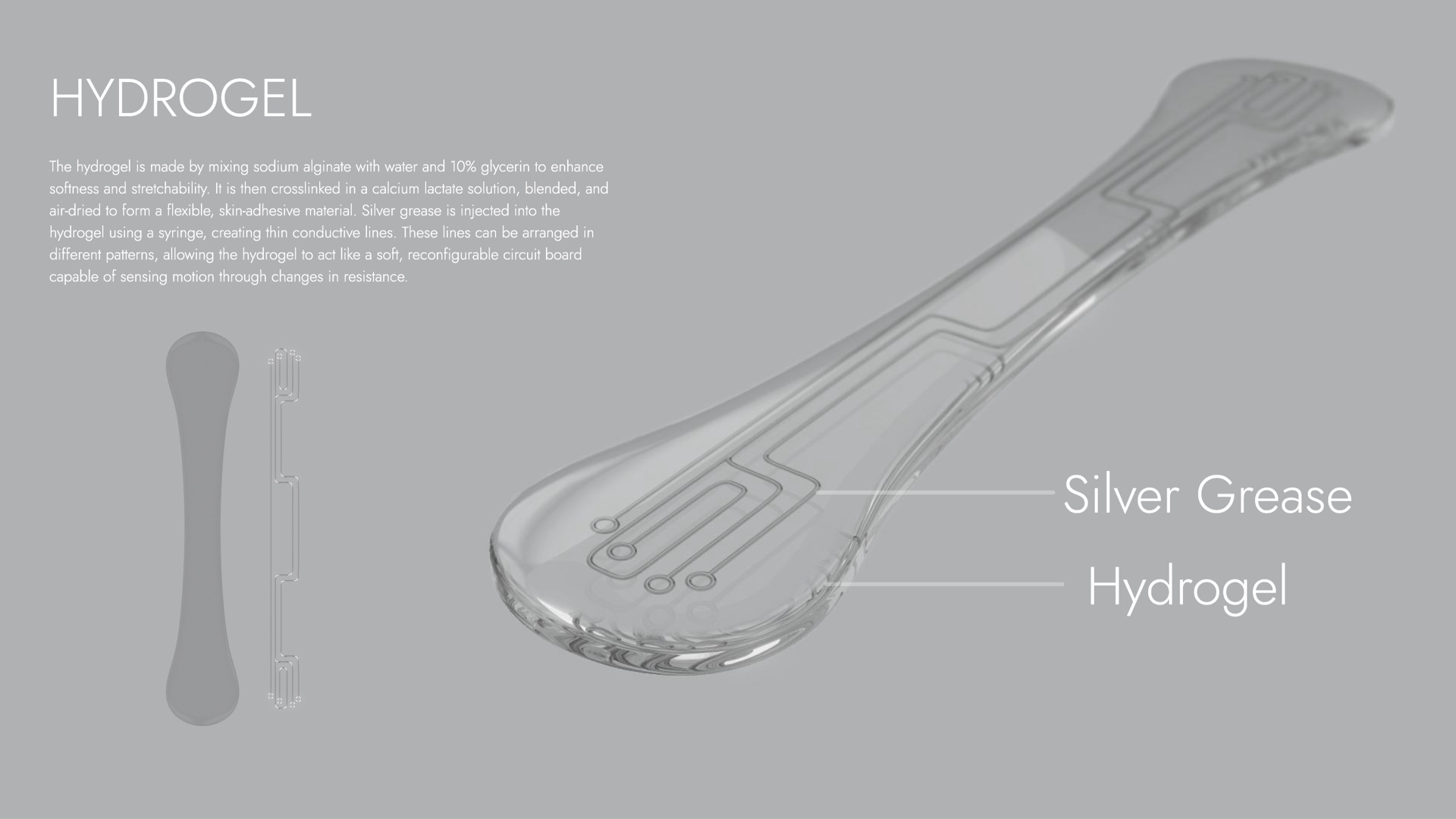
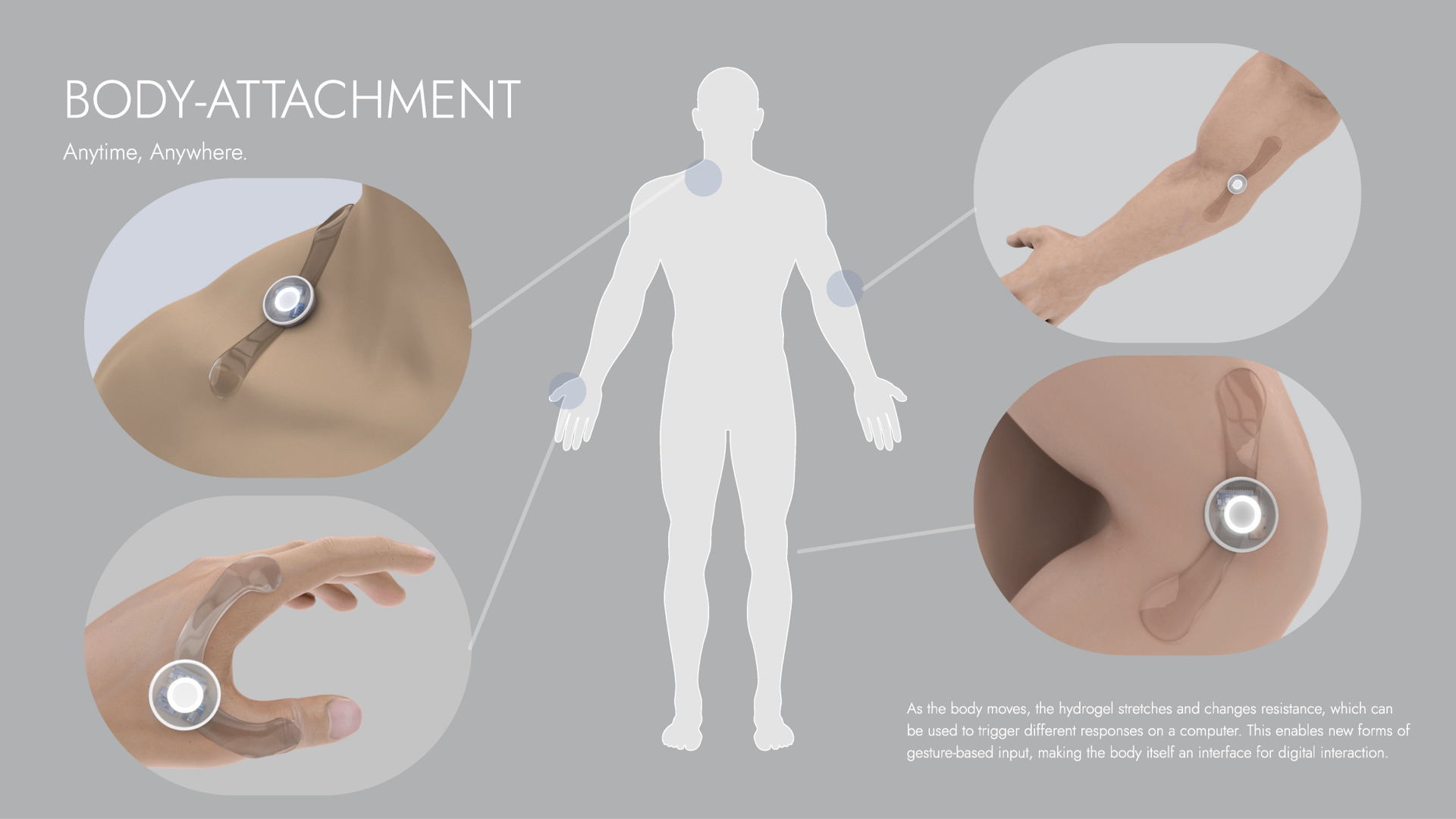




Gestural Biosensors
Creators: Amy Ai & Danielle Hyunsoo Kim
Supervisor: Peter Yeadon
This project explores a soft, single-use hydrogel sensor that detects body movement through changes in resistance. Made from biodegradable materials and paired with wireless electronics, the sensor is skin-friendly and designed for hygienic environments, such as surgical settings and food manufacturing.
In these contextual settings, the single-use, skin-adhesive hydrogel offers a clean, disposable interface for logging motion or interaction without direct contact with shared devices. Its biodegradability and ease of application make it well-suited for short-term, sterile use where hygiene and simplicity are critical.
In these contextual settings, the single-use, skin-adhesive hydrogel offers a clean, disposable interface for logging motion or interaction without direct contact with shared devices. Its biodegradability and ease of application make it well-suited for short-term, sterile use where hygiene and simplicity are critical.
Notably, while this project was developed independently, researchers globally are also exploring silver-based materials for sensitive, stretchable sensors. For example, recent studies using silver nanoparticles in hydrogels have demonstrated extremely high sensitivity for monitoring human movement, further validating the potential of this material direction.
To make the device accessible and hygienic, we designed packaging that stacks multiple hydrogel units in a compact, reusable container. The packaging minimizes manufacturing waste and supports single-use hydrogel application, allowing users to easily apply and replace sensors as needed.
To make the device accessible and hygienic, we designed packaging that stacks multiple hydrogel units in a compact, reusable container. The packaging minimizes manufacturing waste and supports single-use hydrogel application, allowing users to easily apply and replace sensors as needed.
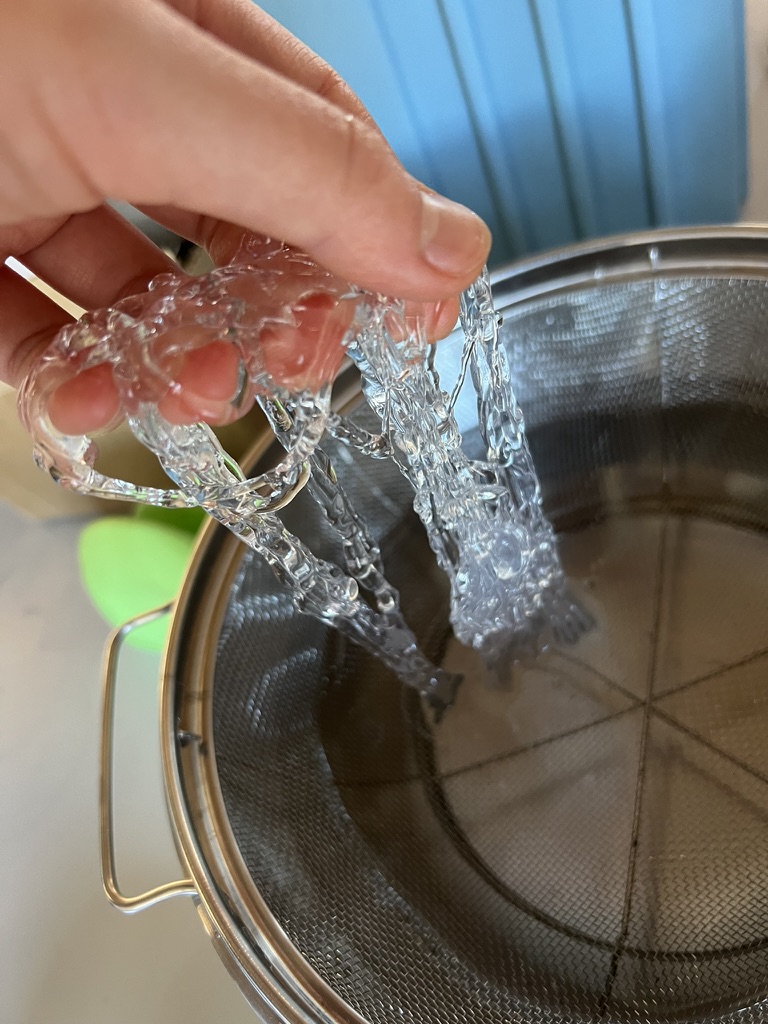


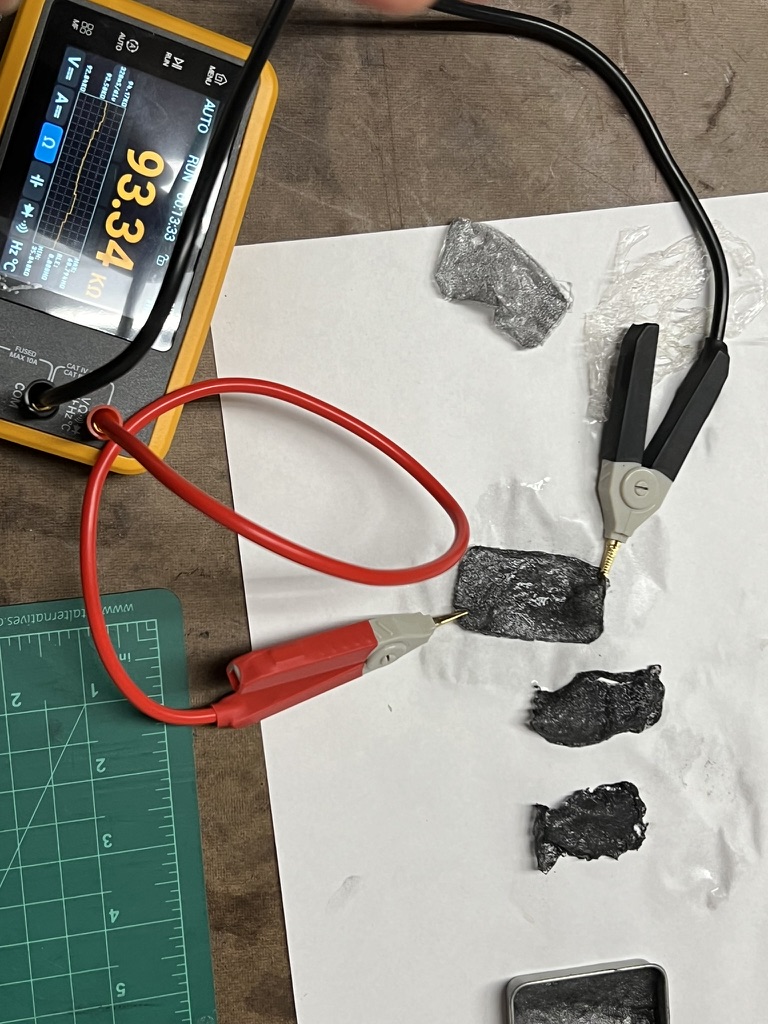

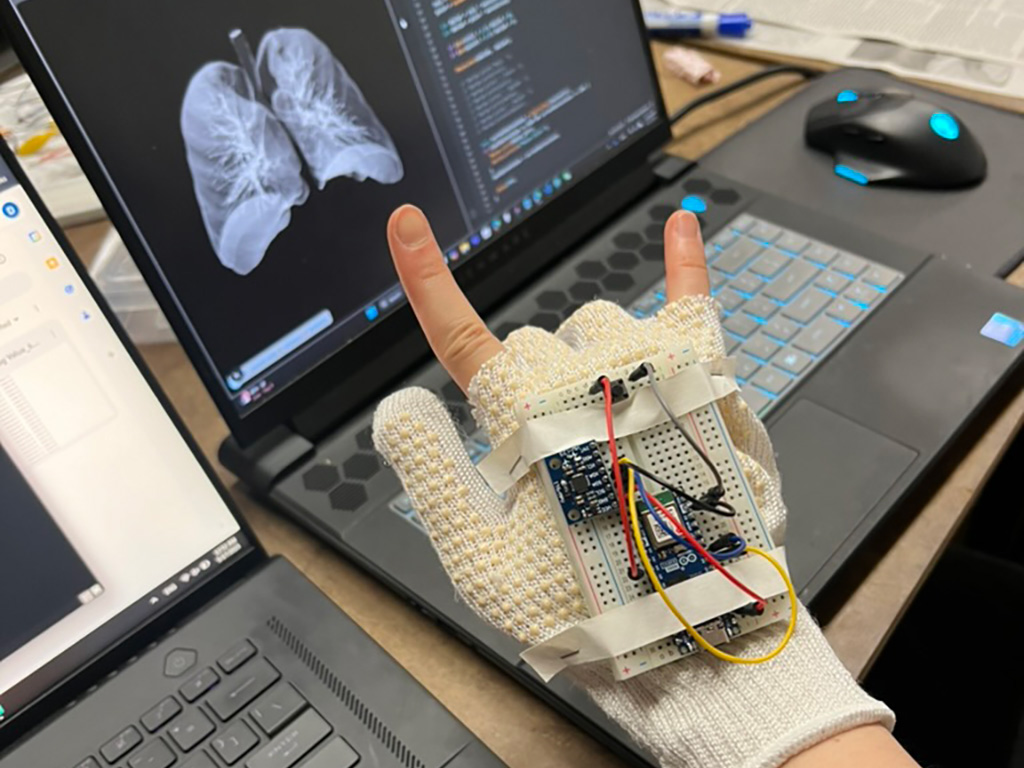
Hydrogel Making Process
The hydrogel is created by dissolving 1 gram of sodium alginate in water and incorporating 10% glycerin by volume to improve its elasticity, moisture retention, and skin adhesion. This mixture is crosslinked in a 5-gram calcium lactate bath, forming soft, stretchable clumps. These clumps are blended into a uniform slushy texture and air-dried to retain flexibility while maintaining structure.
Early Exploration with Graphite Powder
In the early phases of testing, we explored using graphite powder as a conductive filler. Various blending methods were tried, including mixing graphite before and after hydrogel blending, and incorporating small amounts of soap to help with dispersion. However, the graphite produced inconsistent results in conductivity, and we found it challenging to achieve a stable, repeatable resistance signal.
Exploration with injected Silver Grease
The most effective conductive method involved injecting silver grease, a soft, oil-based material, into the hydrogel using a syringe. This created fine, flexible conductive lines that moved with the material as it stretched, producing reliable changes in resistance. However, the resistance data varied between batches, making it difficult to establish a consistent range.
As a result, the hydrogel currently functions best as an on/off switch rather than a precise motion sensor. In theory, other conductive materials (e.g., graphite, carbon black, silver or copper nanoparticles, graphene, etc.) could also be injected into the hydrogel to form functional circuits for resistance-based sensing.
The hydrogel is created by dissolving 1 gram of sodium alginate in water and incorporating 10% glycerin by volume to improve its elasticity, moisture retention, and skin adhesion. This mixture is crosslinked in a 5-gram calcium lactate bath, forming soft, stretchable clumps. These clumps are blended into a uniform slushy texture and air-dried to retain flexibility while maintaining structure.
Early Exploration with Graphite Powder
In the early phases of testing, we explored using graphite powder as a conductive filler. Various blending methods were tried, including mixing graphite before and after hydrogel blending, and incorporating small amounts of soap to help with dispersion. However, the graphite produced inconsistent results in conductivity, and we found it challenging to achieve a stable, repeatable resistance signal.
Exploration with injected Silver Grease
The most effective conductive method involved injecting silver grease, a soft, oil-based material, into the hydrogel using a syringe. This created fine, flexible conductive lines that moved with the material as it stretched, producing reliable changes in resistance. However, the resistance data varied between batches, making it difficult to establish a consistent range.
As a result, the hydrogel currently functions best as an on/off switch rather than a precise motion sensor. In theory, other conductive materials (e.g., graphite, carbon black, silver or copper nanoparticles, graphene, etc.) could also be injected into the hydrogel to form functional circuits for resistance-based sensing.
Resistance Testing Results
Multiple rounds of resistance testing were conducted using a custom-built, Arduino-based auto-ranging ohmmeter. The results are shown below. A consistent pattern of fluctuations, clear up-and-down movements in the graph was key to identifying functional samples. This pattern indicated the potential for the hydrogel to operate as a simple on/off switch. Samples 1 and 9 stood out in particular, showing significant variability over time, while most others remained flat or showed minimal change, limiting their effectiveness. Although a few samples showed promising results, only 2 out of 9 functioned as expected.
Final Outcome and Device Integration
The ESP32 handles wireless data transmission, while the MPU captures orientation and movement through its built-in accelerometer and gyroscope. This setup enables the device to simultaneously collect resistance data from the hydrogel and motion data from the body, allowing for a more responsive and layered understanding of physical input.
Building on this foundation, the team began to explore how the device could be used as a tool for human-computer interaction. The concept evolved into a wearable mouse, a soft, body-adaptive interface that could be attached to different body parts or surfaces to trigger interactions with a computer. By responding to gestures, pressure, or stretch, the hydrogel sensor could serve as a flexible alternative to the standard mouse or button, opening up possibilities for more intuitive, location-independent input in both everyday and specialized environments.
Multiple rounds of resistance testing were conducted using a custom-built, Arduino-based auto-ranging ohmmeter. The results are shown below. A consistent pattern of fluctuations, clear up-and-down movements in the graph was key to identifying functional samples. This pattern indicated the potential for the hydrogel to operate as a simple on/off switch. Samples 1 and 9 stood out in particular, showing significant variability over time, while most others remained flat or showed minimal change, limiting their effectiveness. Although a few samples showed promising results, only 2 out of 9 functioned as expected.
Final Outcome and Device Integration
The ESP32 handles wireless data transmission, while the MPU captures orientation and movement through its built-in accelerometer and gyroscope. This setup enables the device to simultaneously collect resistance data from the hydrogel and motion data from the body, allowing for a more responsive and layered understanding of physical input.
Building on this foundation, the team began to explore how the device could be used as a tool for human-computer interaction. The concept evolved into a wearable mouse, a soft, body-adaptive interface that could be attached to different body parts or surfaces to trigger interactions with a computer. By responding to gestures, pressure, or stretch, the hydrogel sensor could serve as a flexible alternative to the standard mouse or button, opening up possibilities for more intuitive, location-independent input in both everyday and specialized environments.
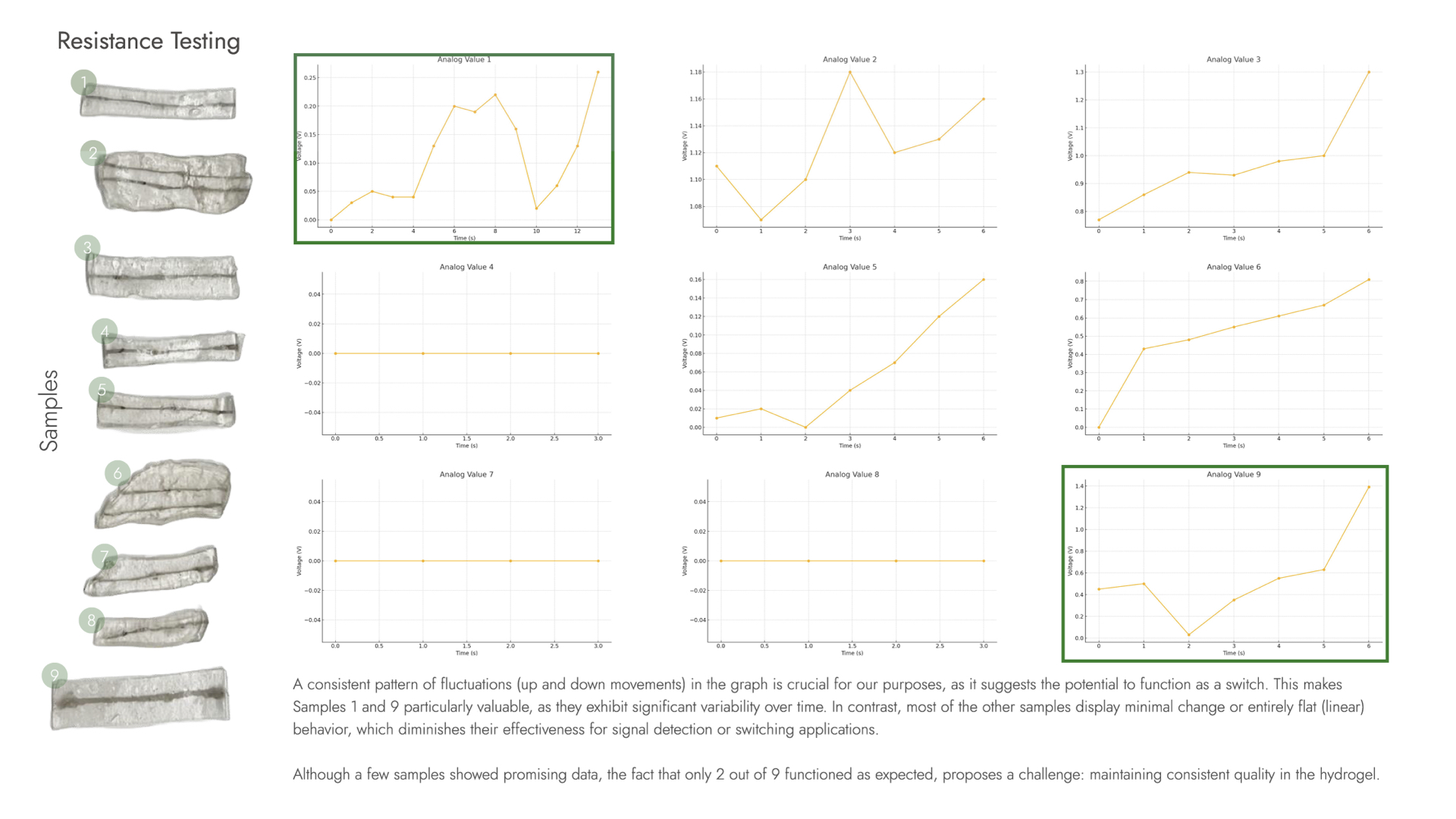
Previous Next
Back︎︎︎

